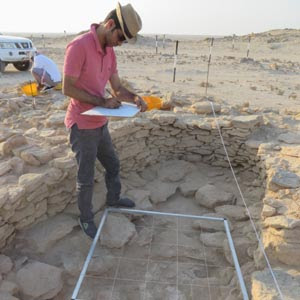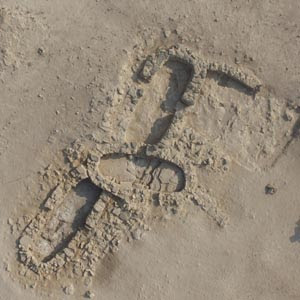New Delhi (NVI): The archaeologists of Abu Dhabi’s Department of Culture and Tourism (DCT Abu Dhabi) have discovered world’s oldest known natural pearl while working at a Neolithic site on Marawah Island.
The department has dubbed it as the ‘Abu Dhabi Pearl’, which was found in layers carbon dated to 5800-5600 BCE, during the Neolithic period. The discovery is proof that pearls and oysters were used in the UAE nearly 8,000 years ago, and represents the earliest known evidence for pearling yet discovered anywhere in the world.
The priceless and historically significant Abu Dhabi Pearl, on loan from the Zayed National Museum collection will feature in the special Louvre Abu Dhabi exhibition 10,000 Years of Luxury that began on October 30.
The exhibition “10,000 Years of Luxury” explores the notion of luxury, its changing meaning through the centuries and what it signifies today through 350 extraordinary objects – fashion, jewellery, art, furniture, design and more. It will be concluding on February 18, 2020
During the Neolithic period, pearls were precious elements certainly falling into the category of luxury and used for adornment.

“The Abu Dhabi Pearl is a stunning find, testimony to the ancient origins of our engagement with the sea. The discovery of the oldest pearl in the world in Abu Dhabi makes it clear that so much of our recent economic and cultural history has deep roots that stretch back to the dawn of prehistory,” said the Chairman of DCT Abu Dhabi, HE Mohamed Khalifa Al Mubarak.
“Marawah Island is one of our most valuable archaeological sites, and excavations continue in the hope of discovering even more evidence of how our ancestors lived, worked and thrived,” he added.
Prior to the Abu Dhabi Pearl discovery, the earliest known pearl in the UAE was uncovered at a Neolithic site in Umm al-Quwain. The ancient pearls from the same time have also been found at a Neolithic cemetery close to Jebel Buhais in the emirate of Sharjah. The carbon dating indicates that the Abu DhabiPearl is older than both these discoveries, said an official statement.
In 1992, Marawah was first discovered during an archaeological survey of the island and consists of numerous collapsed Neolithic stone structures, the earliest architecture yet discovered in the UAE.
The departments have discovered significant finds from the Marawah site including an imported ceramic vase, beautifully worked flint arrowheads, shell, stone beads and numerous painted plaster vessel fragments which represent the earliest known decorative art yet discovered in the UAE. To further uncover its secrets a major new excavation will take place at the site at the beginning of 2020.

The experts have suggested that ancient pearls were possibly traded with Mesopotamia (ancient Iraq) in exchange for highly-decorated ceramics and other goods. The pearls were also likely worn as jewellery by the local population, as indicated by the finds at Jebel Buhais in Sharjah.
The art of pearling required an in-depth knowledge of pearl beds and their locations and expert seafaring skills. Once these were mastered by the ancient inhabitants of Marawah, pearling was to remain a mainstay of the UAE’s economy for millennia. The Venetian jewel merchant Gasparo Balbi, who travelled through the region, mentions the islands off the coast of Abu Dhabi as a source of pearls in the 16th century. The industry flourished until the 1930s.
–PS








